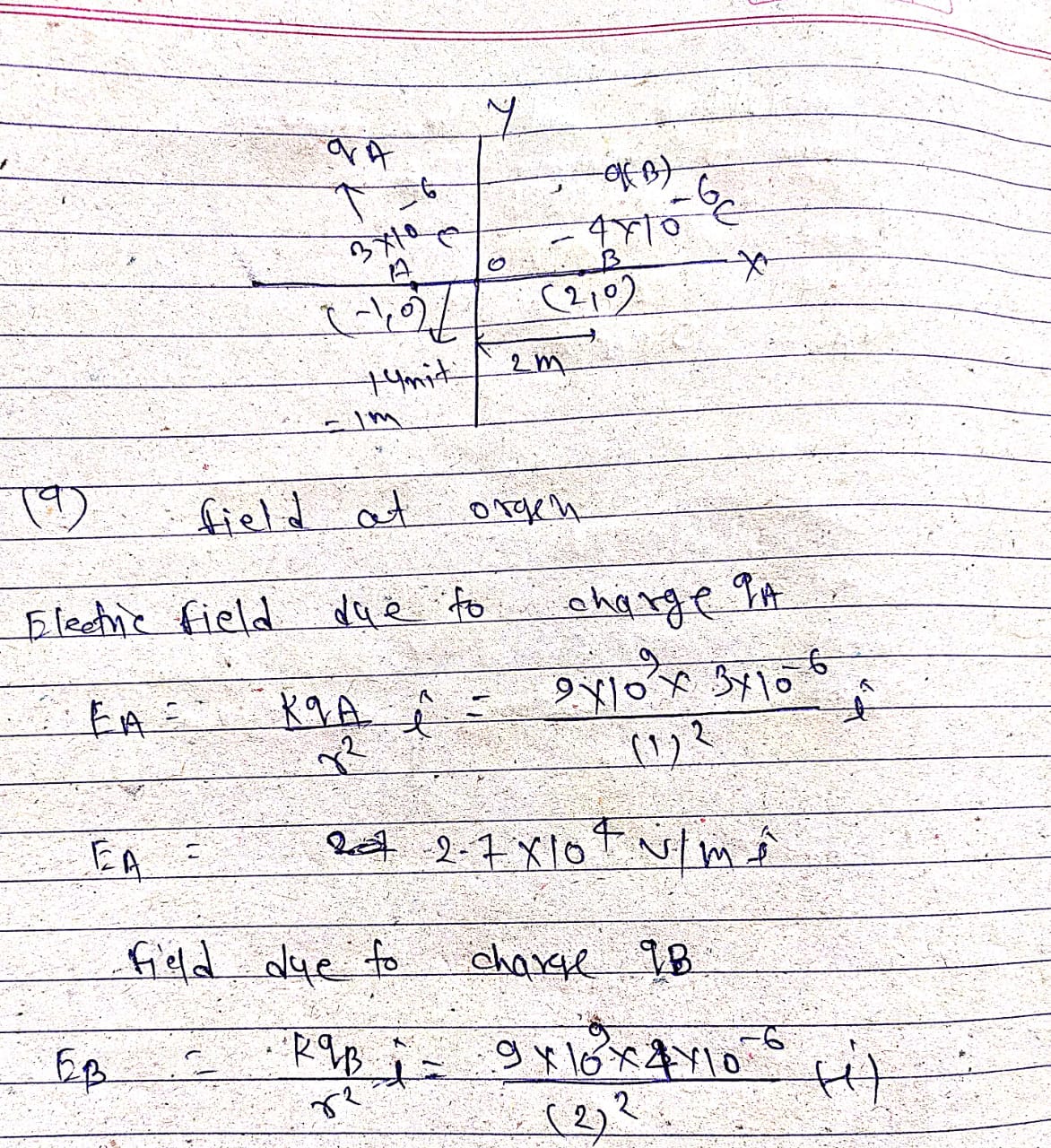A 3*10°C charge is at (-1, 0). A -4*10°C charge is at (2, 0). (a) Calculate the field at the origin. (b) Calculate the voltage at the origin. (c) If an electron is placed at the origin, what force would act on it? What PE would it have? Draw the field lines and equipotentials for question 1. Make them as accurate as vou can.
A 3*10°C charge is at (-1, 0). A -4*10°C charge is at (2, 0). (a) Calculate the field at the origin. (b) Calculate the voltage at the origin. (c) If an electron is placed at the origin, what force would act on it? What PE would it have? Draw the field lines and equipotentials for question 1. Make them as accurate as vou can.
Related questions
Question

Transcribed Image Text:Picture required.
Points are for accuracy.

Transcribed Image Text:A 3*10°C charge is at (-1, 0).
A -4*10°C charge is at (2, 0).
(a) Calculate the field at the origin.
(b) Calculate the voltage at the origin.
(c) If an electron is placed at the origin, what
force would act on it? What PE would it
have?
Draw the field lines and equipotentials for
question 1. Make them as accurate as you can.
Expert Solution
Step 1

Trending now
This is a popular solution!
Step by step
Solved in 4 steps with 4 images
